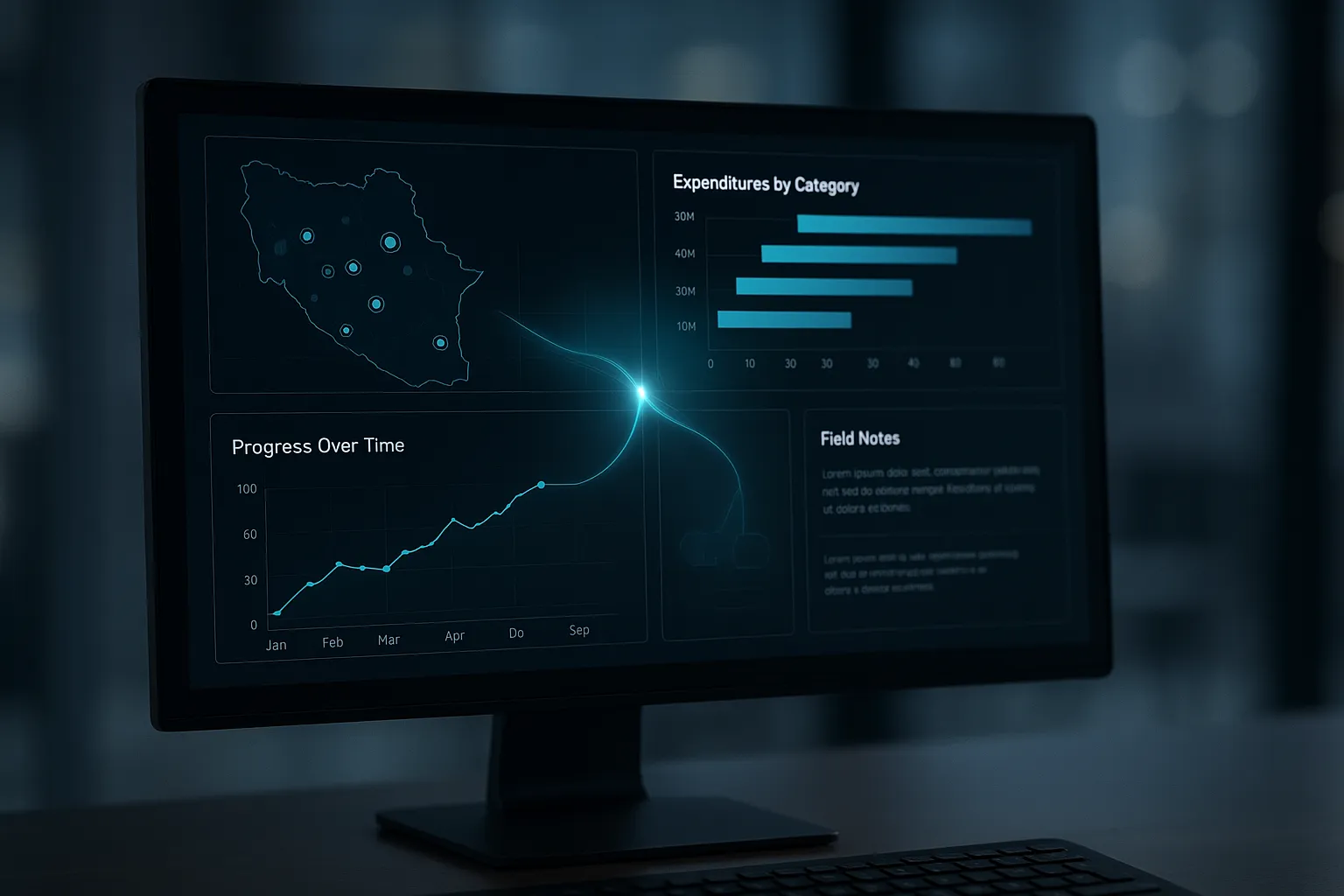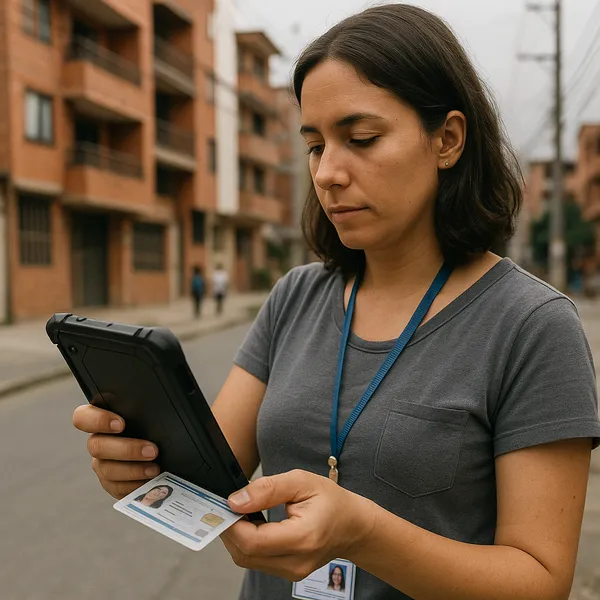The Power of an Integrated Digital Platform for Monitoring Data
Published on: Sun Oct 20 2024 by Ivar Strand
More Than a Spreadsheet: The Power of an Integrated Digital Platform for Monitoring Data
1. Introduction: The Fragmentation of Project Data
Large-scale development projects generate a continuous stream of diverse data: financial expenditure reports, field survey results, asset inventories, contractor progress reports, and geospatial analyses. The key challenge is that this information is often created and stored in disconnected silos. Financials exist in one set of spreadsheets, survey data in another database, and narrative reports as standalone PDF documents.
This fragmentation makes a holistic and timely understanding of project performance extremely difficult. Compiling a comprehensive overview requires manually collating information from these disparate sources—a process that is slow, laborious, and prone to error. By the time an analysis is complete, the situation on the ground may have already changed.
In this paper, we discuss the move away from this fragmented model towards an integrated digital platform approach. This is about creating a unified ecosystem for all project data to enable more effective monitoring and management.
2. A Framework for Unified Data Management
An integrated monitoring platform is a centralized, secure, web-based system designed to ingest, store, analyze, and visualize data from multiple sources in a coherent manner. The fundamental idea is to establish a “single source of truth” where all stakeholders—from field managers to government ministers to donor representatives—can access the same verified information, tailored to their specific needs.
This is a conceptual shift away from viewing data as the byproduct of static reports. Instead, data becomes a dynamic asset that can be queried, cross-referenced, and visualized in near real-time to support active decision-making.
3. Core Capabilities of an Integrated Platform
A well-designed platform provides a set of core capabilities that are not achievable with a collection of spreadsheets and documents. At Abyrint, our development of such platforms has centered on three critical functions.
-
Data Integration and Synthesis The platform’s primary function is to break down data silos. It is engineered to ingest structured and unstructured data from various sources: financial transactions from an accounting system, survey data from a CAPI tool, GPS locations of assets, and time-stamped photographs from field monitors. The system can then synthesize this information. For example, a user can click on a school on a map (geospatial data) and instantly access its construction budget (financial data), completion photographs (field data), and latest student enrollment figures (survey data).
-
Customizable Dashboards and Visualization Raw data is of limited use to senior decision-makers. A key capability of a platform is to translate complex datasets into intuitive visualizations, such as maps, time-series charts, and Key Performance Indicator (KPI) trackers. This allows stakeholders to understand project status at a glance, without needing to read a lengthy report. A customizable dashboard (see Exhibit A for a sample layout) can provide a high-level portfolio overview for a donor, while offering a more granular, project-specific view for a program manager.
-
Secure, Role-Based Access Not all data should be accessible to all people. A professional platform provides granular, role-based access controls. This ensures that users can only view the information relevant to their function. For instance, an implementing partner may be granted access to data for their specific projects, while a finance ministry official can view national-level expenditure trends. This functionality is crucial for maintaining data security and confidentiality while still facilitating broad but appropriate access.
4. The Strategic Value of a Platform Approach
The benefits of an integrated platform extend beyond technical efficiency. By providing a common operating picture for all parties, it enhances transparency and builds trust between donors, government bodies, and implementers. Disagreements that arise from working with different versions of the data are eliminated.
Most importantly, it accelerates the decision-making cycle. When a performance indicator on a dashboard turns from green to red, or a field monitor flags an issue, managers are alerted immediately. This allows for proactive course corrections, rather than waiting months for a formal evaluation to identify a problem.
5. Conclusion: From Data Reporting to Data-Driven Management
The complexity and scale of modern development programming have outgrown the capabilities of the traditional M&E toolkit. The spreadsheet-and-report model, which focuses on periodic reporting, is no longer sufficient.
An integrated digital platform represents a necessary evolution towards continuous, data-driven oversight. It is not an IT project for its own sake, but rather a new way of working that provides the clarity, control, and shared understanding required to manage complex portfolios effectively and deliver on promised results.



